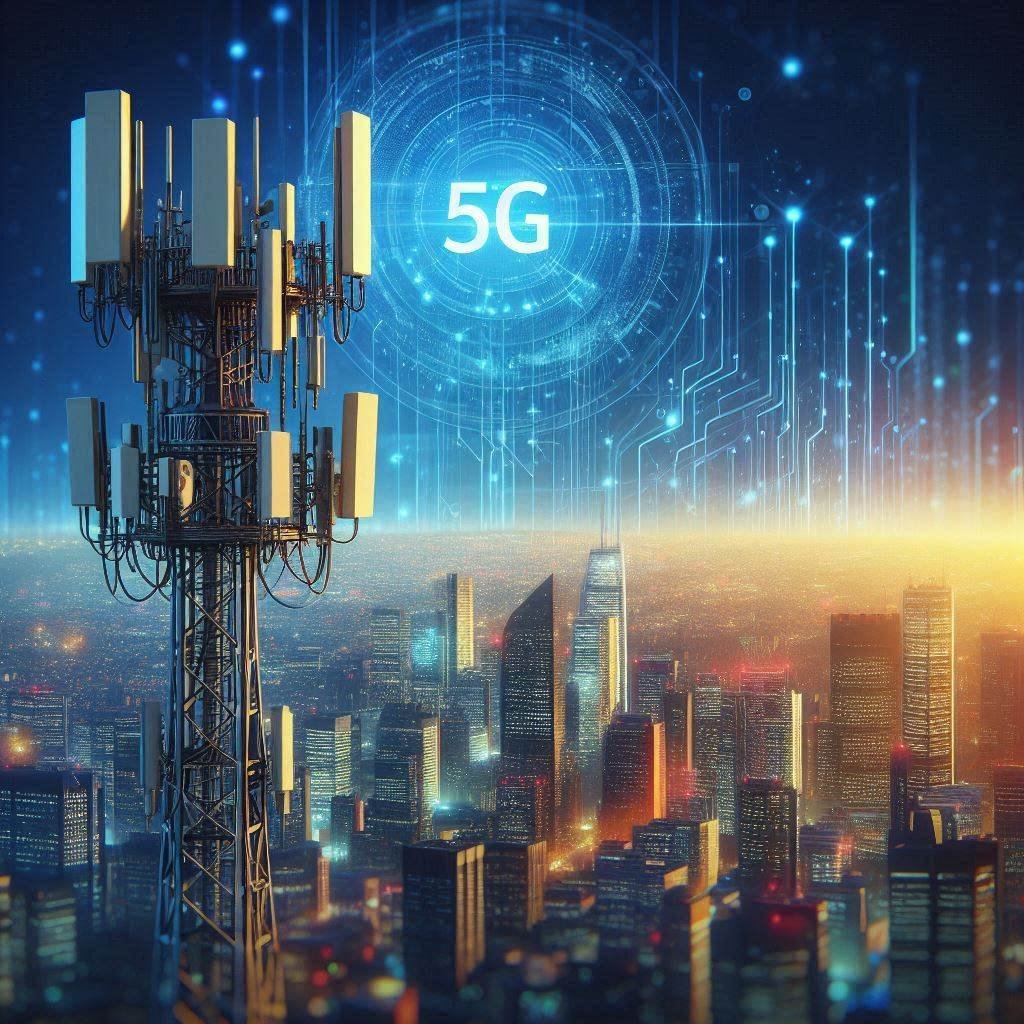5G and Health Concerns: Separating Fact from Fiction
Introduction
The rollout of 5G, the fifth generation of mobile network technology, has sparked a wave of excitement about faster internet speeds and greater connectivity. However, it has also fueled numerous conspiracy theories and concerns about its potential health effects. Critics claim that 5G radiation causes everything from cancer to COVID-19. These claims have gained traction in online forums, social media platforms, and even some mainstream discussions. These fears have even led to acts of vandalism against 5G infrastructure in various parts of the world. But how much of this is rooted in fact? In this article, we’ll dissect the most prominent conspiracy theories surrounding 5G and health concerns, examine the evidence supporting these claims, and present scientific evidence to debunk misinformation. By addressing these concerns thoroughly, we aim to clarify misconceptions and provide a science-based understanding of this transformative technology.
1. “5G Causes Cancer”
The Claim
One of the most widespread conspiracy theories is that 5G radiation causes cancer. Proponents argue that the higher frequency radio waves used by 5G are more dangerous than those used by previous generations of wireless technology. Activist groups and concerned citizens claim that prolonged exposure to 5G signals will lead to an increase in cancer rates. Some fear that because 5G uses millimeter-wave technology, it can penetrate the skin and damage underlying tissues, ultimately leading to cancer.
The Evidence
Supporters of this theory often cite studies on electromagnetic radiation (EMR) and its potential to damage human cells. Some point to research on high-frequency electromagnetic waves, such as X-rays and gamma rays, which are known to be carcinogenic. They argue that because 5G uses higher frequencies than 4G, it must also be harmful. Anecdotal reports of people experiencing headaches, nausea, or fatigue near 5G towers are also used as evidence. These individuals claim they can “feel” the effects of 5G radiation, adding to the emotional weight of their arguments. In some instances, animal studies showing biological responses to high electromagnetic field exposure are also referenced.
The Debunking
While it is true that certain types of radiation, such as ionizing radiation (e.g., X-rays), can cause cancer by damaging DNA, 5G uses non-ionizing radiation. Non-ionizing radiation lacks the energy to break chemical bonds or damage DNA. The frequencies used by 5G fall within the microwave spectrum and are far lower in energy than ionizing radiation. Studies by reputable organizations, including the World Health Organization (WHO) and the International Commission on Non-Ionizing Radiation Protection (ICNIRP), have found no conclusive evidence linking 5G to cancer. Comprehensive reviews of existing studies have repeatedly shown that the levels of radiation emitted by 5G towers are well below international safety limits.
Importantly, health and safety standards for radiofrequency radiation are strictly enforced globally. Regulators consistently measure and monitor emissions to ensure compliance. Extensive long-term studies on earlier generations of wireless technology have not demonstrated significant cancer risks, making it unlikely that 5G, which builds on the same principles, poses any threat.
Fact-Checking
2. “5G Causes COVID-19”
The Claim
During the height of the COVID-19 pandemic, a bizarre conspiracy theory emerged claiming that 5G technology either caused the virus or exacerbated its spread. Proponents argued that 5G towers weakened the immune system, making people more susceptible to COVID-19, or that the virus itself was a cover-up for health problems caused by 5G radiation. Some iterations of this theory went even further, claiming that 5G networks were being used to activate harmful biological agents within the human body.
The Evidence
This theory gained momentum through social media platforms and YouTube videos that showcased maps comparing 5G rollout areas with COVID-19 outbreaks. Some claimed that Wuhan, the epicenter of the pandemic, was one of the first cities to deploy 5G technology, suggesting a direct correlation. Videos of people allegedly collapsing near 5G towers were widely shared, further fueling fear and speculation. Supporters also cited supposed whistleblowers who claimed governments were using 5G to control populations under the guise of the pandemic.
The Debunking
Scientific consensus is clear: viruses, including SARS-CoV-2 (the virus that causes COVID-19), are biological entities and cannot be caused by electromagnetic waves. The idea that 5G could “activate” a virus is biologically implausible. Correlation does not imply causation. The overlap between 5G rollout areas and COVID-19 hotspots can be easily explained by population density, as both 5G deployment and viral transmission are more likely in urban areas.
The claim that 5G weakens the immune system is also unfounded. Research shows that exposure to non-ionizing radiation at levels permitted by regulatory guidelines does not affect the immune system. COVID-19’s spread is well understood to be caused by human-to-human transmission through respiratory droplets and not by electromagnetic radiation.
Furthermore, organizations like the WHO and the Centers for Disease Control and Prevention (CDC) have repeatedly stated that there is no evidence linking 5G technology to the spread or severity of COVID-19.
Fact-Checking
3. “5G Affects Brain Function and Mental Health”
The Claim
Another popular theory is that 5G radiation disrupts brain function, leading to issues like anxiety, depression, and cognitive decline. Some claim that 5G can interfere with the brain’s natural electromagnetic fields, causing neurological disorders. Others believe that exposure to 5G waves can trigger chronic conditions, such as Alzheimer’s disease or Parkinson’s disease, over time.
The Evidence
Proponents of this theory often cite studies on electromagnetic hypersensitivity (EHS), a condition where individuals report symptoms such as headaches, fatigue, and dizziness when exposed to electromagnetic fields. They also refer to studies on low-frequency electromagnetic fields, which have shown some effects on brain activity in lab settings. Additionally, online forums and anecdotal reports amplify concerns, with individuals describing how they feel mentally foggy or emotionally unstable in areas with high 5G coverage.
The Debunking
Electromagnetic hypersensitivity is not recognized as a medical diagnosis by most health organizations, including the WHO. Controlled experiments have consistently shown that individuals who report EHS symptoms cannot reliably distinguish between real and sham electromagnetic field exposure. Furthermore, there is no scientific evidence to support the claim that 5G can alter the brain’s natural electromagnetic activity.
Studies investigating the long-term effects of non-ionizing radiation on neurological health have repeatedly shown no link between wireless technology and cognitive or emotional disorders. The frequencies used by 5G are not biologically significant in terms of interacting with brain activity. Brain disorders such as Alzheimer’s and Parkinson’s disease have well-established causes and risk factors that do not include electromagnetic radiation.
Fact-Checking
4. “5G Harms Wildlife and the Environment”
The Claim
Environmental concerns are another angle of 5G-related conspiracy theories. Some argue that 5G radiation disrupts wildlife, particularly birds and bees, contributing to population declines. Others claim that 5G radiation harms plants and ecosystems. These theories often suggest that 5G’s widespread deployment is part of a broader disregard for ecological sustainability.
The Evidence
Supporters of this theory often point to studies showing that electromagnetic radiation affects animal behavior, navigation, and reproduction. For example, research on bees has shown that high levels of electromagnetic exposure can disrupt their ability to navigate. There have also been anecdotal reports of birds avoiding areas near 5G towers. Concerns about “electromagnetic smog” and its cumulative effects on ecosystems are frequently cited as additional evidence.
The Debunking
While some studies have shown potential effects of electromagnetic radiation on wildlife, these are typically at exposure levels far higher than those emitted by 5G networks. The frequencies and power levels used in 5G technology are unlikely to cause significant environmental harm. Furthermore, population declines in species like bees and birds are more strongly linked to habitat destruction, pesticide use, and climate change than to electromagnetic radiation.
The concept of “electromagnetic smog” often lacks scientific precision. Regulatory bodies continually assess and enforce exposure limits to ensure that wireless technologies, including 5G, remain safe for humans and the environment.
Fact-Checking
5. “5G Is a Government Surveillance Tool”
The Claim
Some conspiracy theorists believe that 5G technology is a tool for government surveillance and control. They argue that the dense network of 5G towers and devices enables real-time monitoring of citizens, infringing on privacy rights. Proponents of this theory claim that 5G’s capabilities, such as its low latency and ability to connect billions of devices, make it the perfect infrastructure for mass surveillance. Some suggest that 5G is part of a global agenda to control populations through advanced surveillance technologies, including facial recognition and data tracking. This claim often ties into broader narratives about “Big Brother” or secret government operations.
The Evidence
The main argument for this theory revolves around the advanced capabilities of 5G networks. Supporters often cite real-world examples of governments using technology for surveillance, such as China’s use of facial recognition technology and internet monitoring. They argue that the increased number of 5G-connected devices, from smartphones to smart appliances, creates unprecedented opportunities for data collection. Concerns about data breaches, unauthorized access, and misuse of personal information are also frequently mentioned as evidence of the risks associated with 5G.
The Debunking
While concerns about data privacy and cybersecurity are valid and should be taken seriously, attributing these risks solely to 5G technology is misleading. Surveillance and data collection can occur over any network, not just 5G. The capabilities of 5G do not inherently include mass surveillance tools; instead, it is the software and policies implemented by governments and companies that determine how data is used.
It’s important to differentiate between the technology itself and how it is applied. For example, concerns about surveillance are more accurately directed at data collection practices, weak encryption, and lack of transparency by tech companies or governments. Addressing these issues requires robust privacy laws and regulations, not a rejection of 5G technology.
Furthermore, 5G networks are being deployed by a wide range of countries, companies, and organizations, making it unlikely that a global surveillance agenda is at play. The decentralized nature of 5G infrastructure development contradicts the idea of a single, coordinated effort for mass surveillance.
Fact-Checking
- Snopes – 5G and Surveillance Claims
- Electronic Frontier Foundation (EFF) – Privacy Concerns and Technology
Conclusion
The concerns and conspiracy theories surrounding 5G and its potential health effects have created widespread fear and misinformation. While it is natural to question new technologies, it is critical to base conclusions on scientific evidence rather than speculation or anecdotal claims.
From fears about cancer to wild theories linking 5G to COVID-19, most of these claims are either unfounded or based on misinterpretations of science. Reputable organizations, including the World Health Organization, the International Commission on Non-Ionizing Radiation Protection, and various national regulatory bodies, have consistently concluded that 5G is safe when used within established guidelines. Additionally, the evidence presented by conspiracy theorists often lacks credibility, relying on anecdotes, selective studies, or outright falsehoods.
At the same time, valid concerns about data privacy and cybersecurity should not be ignored. However, addressing these challenges requires targeted policy measures and technological solutions rather than fearmongering about 5G.
As consumers and citizens, it’s essential to think critically about the information we encounter. Misinformation can have real-world consequences, from vandalism of infrastructure to public health risks due to the spread of false narratives. By relying on trusted sources, fact-checking claims, and promoting scientific literacy, we can navigate the complexities of new technologies like 5G while embracing their benefits responsibly.
Invitation to Readers: What are your thoughts on 5G and the concerns surrounding it? Have you encountered any of these conspiracy theories? Share your experiences and questions in the comments section below!

